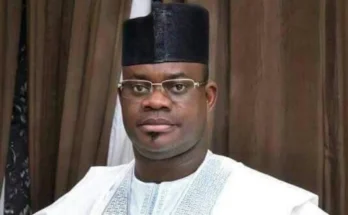The boat disaster that claimed over 100 lives at Egbu Village in Patigi Local Government Area of Niger state is a fallout of leadership failure. The tragedy occurred in the early hours of Tuesday when the boat conveying the victims from Kpada village where they had gone to attend a wedding ceremony crashed into a tree and split into two. The deceased were among the 300 guests that attended the occasion.
It is the worst boat disaster in recent history and the tragedy has attracted sympathies and condolence messages from world leaders, including the Secretary General of the United Nations Organisation, Antonio Guterres.
The recent mishap has added to the long list of boat accidents that have occurred in different parts of the country in recent times, making the nation’s waterways to become as increasingly risky as our highways.
For instance, in May 2021, about 30 people were killed when a vessel conveying 100 passengers hit a stump and broke into two along the River Niger. In the same month, a vessel carrying 160 passengers was rendered asunder after hitting an object underneath the River Niger. The victims were travelling from Niger state to Kebbi state when the disaster struck. About 98 passengers lost their lives.
On May 10, this year, 15 kid passengers lost their lives, while 25 others went missing after a boat mishap at Dandeji village in the Shagari Local Government Area of Sokoto state.
Many factors are responsible for these calamities. Some are natural, while others are manmade. There have been calls from different quarters for the dredging of our two major waterways – the River Niger and River Benue as well as the arterial rivers that crisscross the hinterlands. River Niger is particularly more notorious in claiming human lives.
The Yar’Adua administration made a bold move to clean up the River Niger. In September 2009, the late President Umaru Musa Yar’Adua officially commissioned the herculean task of dredging the massive river. During a ceremony in Lokoja, he vividly spoke of his seven-point agenda, saying that the project would help in the realisation of his regime’s Vision 20-2020.
There was a thunder clap from excited Nigerians, especially those whose communities are traversed by the river, as they welcomed the bold initiative. They also saw the task, when accomplished, as breaking a 43-year-old jinx. It was hoped that River Niger would experience an incursion – the kind it had not faced since the days of the explorer Mungo Park.
As the then transport minister, Alhaji Ibrahim Bio, explained at the ceremony, 572km of the river would be dredged across eight states from Delta through Anambra to Niger, and some 152 communities. The project was to be executed within three or so years. The late Yar’Adua stated that the dredging would “provide unobtrusive, cheaper and safer means of haulage of goods and trading activities among adjoining communities and people of states neighbouring the Lower River Niger.”
It would then be possible to reach Onitsha in Anambra state from Lokoja in Kogi state within 50 minutes by speedboat and not eight hours or longer by road. Given the deplorable condition of the network of roads along the axis now, it should take longer hours.
About nine months after the commencement of the dredging exercise, Yar’Adua passed on. And as it is typical of the mentality of our leaders, the project was pursued desultorily and later abandoned. As at 2009, the condition of the river was nowhere as terrible as it is today. Our leaders did not appreciate the dual benefits of the exercise – boost the water transportation and free flow of water along the course of the river.
But three years later, precisely in 2012, Nigeria experienced perhaps the worst fury of flood along the river in 50 years, killing no fewer than 500 people. Economic life was halted and an estimated total of seven million people were affected.
Today, the two major rivers are clogged with fallen trees and sand dunes that are submerged under them. These are the objects that have constituted dangers to the intra-marine transportation all over the country.
The Egbu boat tragedy is one disaster too many. The Tinubu administration must shift attention to this sub-sector long neglected by his predecessors. Coming from a littoral background, he should appreciate the socio-economic importance of safe waterways. By dredging the two main rivers, his government will use one stone to kill two birds: it will engender free flow of water to mitigate flooding and make travelling by boat safe.
It has become imperative to rejig the agency charged with intra-marine transportation at all levels of government. There is also the need to train and license boat operators. Government must also ensure that operators put necessary safety measures in place before embarking on any voyage, such as lifebuoys and other objects to keep their passengers afloat in the event of any mishaps until help comes their way. Furthermore, it is necessary to examine the boats to determine their river-worthiness before they set to sail.




